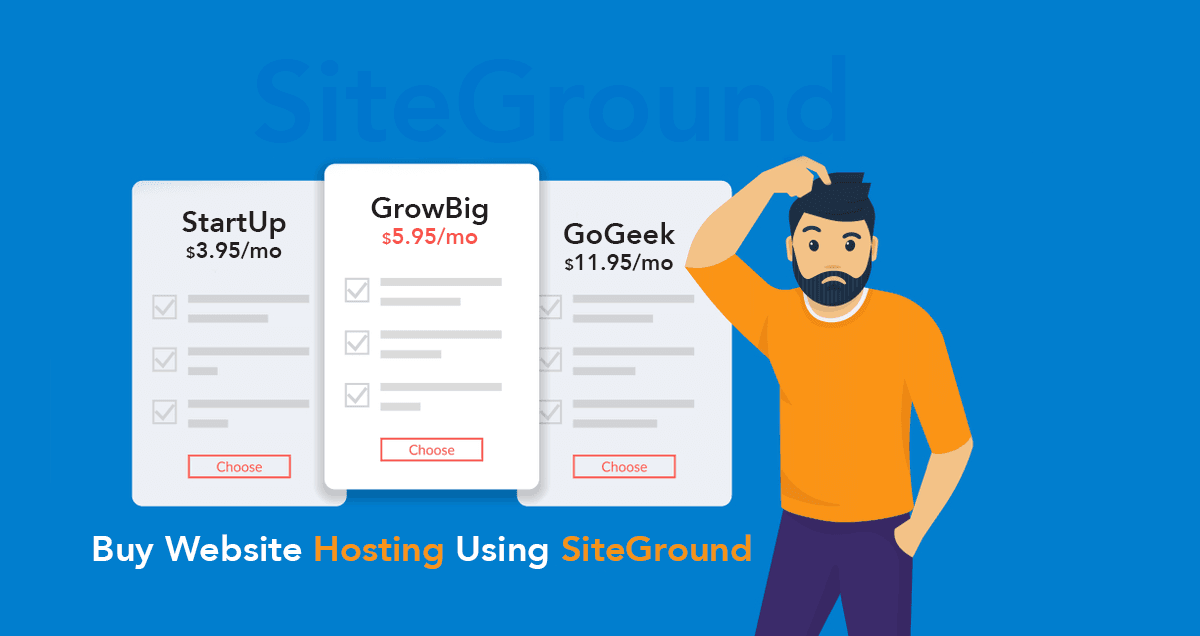
SSL stands as Secure Sockets Layer. It protects the website and uses sophisticated encryption keys to divert communication. The SSL handshake signal decrypts the communication at the data or user ends. This handshake confirms that the communication is encrypted.
Secure Sockets
Secure Sockets Layer (SSL) is a networking protocol that creates an encrypted connection between a web client and a web server. Two keys are used to decrypt and encrypt data. One key is public, and one is known only by the sender. SSL-enabled web sites are marked with HTTPS in URLs. A trusted certificate with a public key will be sent to a user who requests an encrypted session from a secure website.
The protocol uses a symmetric-key algorithm to encrypt data that passes between the server and client. Symmetric encryption is unique to each connection and unlike other encryption methods. The encryption details are also negotiated between the client and the server before any data is sent. This makes encryption more secure and reliable.
Function
SSL is a security protocol that encrypts data being transmitted between websites and their users. This ensures that the data can be unlocked only by the intended recipient. This is a great feature if sensitive data needs to be shared online. It makes it nearly impossible to intercept this information by hackers. SSL is therefore essential for websites.

SSL creates a secure link by creating a trusted connection between web servers and web browsers. It does this by recognizing the certificate of a webserver and sending it to its browser. The browser authenticates the certificate. It will then send back a digitally signed confirmation to begin an SSL encrypted connection. The encrypted data is sent between the browsers and the web servers.
Types
There are two types SSL certificate: self-signed certificates and third party certificates. Self-signed certificates provide data encryption and HTTPS to the address line. The self-signed certificate cannot be trusted as anyone can create it without the approval of a third party. As such, most browsers will display a warning message when browsing a self-signed website.
SSL certificates can be installed on one or more web servers and used to validate domains. They are also used to secure an organization's website. Multiple domains and subdomains can be protected by an SSL certificate.
Importance
SSL stands to Secure Sockets Load and protects sensitive information. This secure connection makes it impossible for computers to intercept or detect the data. One example of this is when a visitor to a website fills out a form with their personal details. This data could easily be stolen by hackers or identity thieves if SSL is not used. To protect sensitive information of visitors, SSL should be used on all websites.
Google's search engine rankings are also dependent on SSL. Google updates its ranking algorithm regularly, and having SSL can give your website a small boost in search engine rankings. Your site can appear more trustworthy to users if SSL is used. Chrome, for example, will display a warning message when your site isn’t secure. It’s therefore important to have an SSL certificate.

Get a certificate
A certificate for SSL security is an important step to protect your website. SSL certificates include information about the website owner, the serial number, expiration date, public key and digital signature of the certifying authorities. These certificates serve to authenticate your site and prove that it is a legitimate company. You can check the HTTPS address in the URL to confirm the certificate.
You can easily install an SSL certificate to your site using certain CMS platforms. HubSpot CMS comes with an SSL built in that is free of cost. It will also renew your SSL certificate. This will happen 30 days before it expires.
FAQ
How much does it cost to build a website?
The answer depends on what you are trying to achieve with your website. Google Sites might be free if your website is limited to information about you or your company.
However, if you want to attract visitors to your website, you'll likely want to pay for something more robust.
A Content Management System (like WordPress), is the most popular option. These programs allow you to create a website without knowing anything about programming. And because third-party companies host these sites, you won't need to worry about getting hacked.
Squarespace offers a great way to build your website. You can choose from a range of plans, ranging in price from $5 to $100 per monthly depending on what you need.
WordPress is a CMS.
Yes. It is a Content Management System (CMS). CMS is a way to manage your website content without having to use an application such Dreamweaver/Frontpage.
WordPress is free! Hosting is all you need, and it's usually free.
WordPress was originally designed to be a blogging platform. However, WordPress now offers many options including eCommerce sites and forums, membership websites, portfolios and portfolios.
WordPress is easy to install and set up. It is necessary to download the installation file from their site and upload it on your server. Next, simply go to your domain name via your web browser and log into your new site.
After installing WordPress on your computer, you'll need a username and a password. Once you log in you'll be able access all your settings via a dashboard.
You can now add pages, posts and images to your site. This step can be skipped if editing and creating content is easy for you.
You can, however, hire a professional Web designer to handle the whole thing if your preference is to work with another person.
Can I use HTML & CCS to build my website?
Yes, you can! You will need basic knowledge of web design and programming languages like HTML (Hyper Text Markup Language) and CSS (Cascading Style Sheets). These two languages make it possible to create websites accessible by all who have an internet connection.
How do I design a website.
It is important to first understand your customers and what your website should do for them. What are your customers looking for?
What issues might they be facing if they can't locate what they're looking at on your site.
After you have this information, you need to find out how to solve the problem. You also need to make sure that everything on your site looks right. It should be easy-to-use and navigate.
It is important to have a professional-looking website. It shouldn't take too many seconds to load. If it takes too much time, people will not stay as long as they want. They will go elsewhere.
If you want to create an eCommerce site, think about where all of your products are located. Do they all reside in one spot? Are they scattered about your site?
It's important to decide if you want to sell just one product or multiple products. Are you looking for a single product to sell or multiple products?
When you answer these questions, your site can be built.
Now you need to worry about the technical side of things. What will it take to make your site work? It will it work fast enough? Can people get to it quickly from their computers?
Will it be possible to buy something online without paying any extra? Will they have to register with your company before they can buy something?
These are vital questions you need to ask. These are the questions that you need to answer in order to be able move forward.
What is a UI developer?
A user interface (UI) designer creates interfaces for software products. They design the application's layout and visual elements. Sometimes, the UI designer might also include graphic artists.
The UI Designer should be a problem solver who understands how people use computers and what makes them tick.
A UI Designer should have a passion in technology and software design. From developing ideas to implementing them into code, a UI designer must be able to comprehend all aspects of the field.
They should be capable of creating designs using a variety tools and techniques. They should be able to think creatively and solve problems by creating innovative solutions.
They must be organized and detail-oriented. They should be able develop prototypes quickly, efficiently and accurately.
They should feel at ease working with clients, large and small. They should be able, and willing, to adapt in different environments and situations.
They must be able communicate with others effectively. They should be able to express their thoughts clearly and concisely.
They should be well-rounded people with strong communication skills.
They should be highly motivated and driven.
They should be passionate about what they do.
How do you create a free website.
It depends on what type of website you want to create. Do you want to sell online products, start a blog, build a portfolio, or both?
It is possible to create a basic website with HTML and CSS (a combination HyperText Markup Language & Cascading Style sheetss). Although HTML and CSS are possible to create a website, most web developers recommend using WYSIWYG editors such as Frontpage or Dreamweaver.
If you don't have experience designing websites, hiring a freelance developer might be the best option. They can help you build a website customized to your needs.
Freelance developers can charge either an hourly or a flat fee. It all depends on how much work they do in a set timeframe.
For example, companies may charge 50-100 dollars an hour. Larger projects will usually attract higher rates.
A lot of freelance websites offer job listings. You can also search on those websites before you reach out to developers.
What is Website Design Software?
Web design software is used to create web pages and other digital media by graphic artists, photographers and illustrators.
There are two main types for website design software. Desktop apps are installed locally on your computer and require you to install additional software on your computer. Cloud-based solutions are hosted remotely on the internet and require no additional software on your computer, making them ideal for mobile users.
Desktop Applications
Although desktop apps offer more features than cloud-based applications, they are not always required. Some people prefer working exclusively on a desktop app, as they find it easier. Some people like the same tool no matter whether they're working on a computer or a smartphone.
Cloud-Based Solutions
Cloud-based services are the best choice for web developers who want to save both time and money. These services allow you to edit any type of document from anywhere that has an internet connection. This means you can work on a tablet while waiting for your coffee to brew.
If you decide to use a cloud service, you will still need a license. You don't have to buy additional licenses for upgrading to the latest version.
If you have Photoshop, InDesign and Illustrator, these programs can be used for creating web pages.
Statistics
- At this point, it's important to note that just because a web trend is current, it doesn't mean it's necessarily right for you.48% of people cite design as the most important factor of a website, (websitebuilderexpert.com)
- Is your web design optimized for mobile? Over 50% of internet users browse websites using a mobile device. (wix.com)
- It's estimated that in 2022, over 2.14 billion people will purchase goods and services online. (wix.com)
- The average website user will read about 20% of the text on any given page, so it's crucial to entice them with an appropriate vibe. (websitebuilderexpert.com)
- It enables you to sell your music directly on your website and keep 100% of the profits. (wix.com)
External Links
How To
What is website hosting?
Website hosting refers simply to the place that people visit when they visit a website. There are two types.
-
Shared hosting is the cheapest. Your website files are stored on a server that is owned by another person. Customers visit your website and send their requests over the Internet to this server. The owner of the server then hands off the request to you.
-
Dedicated Hosting - This option is the most costly. Your website is hosted entirely on one server. Your traffic stays private as no other websites can share the same server.
Shared hosting is cheaper than dedicated hosting for most businesses. With shared hosting, the company that owns the server provides the resources needed to run your website.
Both options have their pros and cons. Here are the differences:
Shared Hosting Pros
-
Lower Cost
-
Easy to Set Up
-
Regular Updates
-
It is available on many Web Hosting Companies
Hosting shared can be as low as $10 per month. This price often includes bandwidth. Bandwidth refers the data that you can transfer over the Internet. Even if you upload only photos to your blog you might still have to pay more for large amounts of data that you transfer through your account.
You'll soon realize why your old host cost so much once you get started. Most shared hosts have very poor customer support. You'll be on your way after they walk you through setting it up.
You'll want to look into a provider that offers 24-hour phone support. They will assist you with any problems that may arise while you're sleeping.
Cons of dedicated hosting
-
More Expensive
-
Less Common
-
Requires specific skills
With dedicated hosting you will have everything you need to manage your website. You won't worry about how much bandwidth you are using or how much RAM (random Access Memory) you have.
This means that you'll spend a bit more upfront. However, once your business goes online, you'll discover that you don’t need as much technical support. You will become an expert in managing your servers.
So Which Is Better For My Business?
The answer will depend on the type and purpose of your website. If you're selling products only, shared hosting might work best. It's easy to set up and maintain. A server shared with several other sites means that you will receive frequent updates.
If you want to create a community around a brand, dedicated hosting may be the best choice. Instead of worrying about your traffic, you can build your brand while still being able to concentrate on your business.
Bluehost.com offers both. They offer unlimited data transfers per month, 24/7 support and free domain registration.